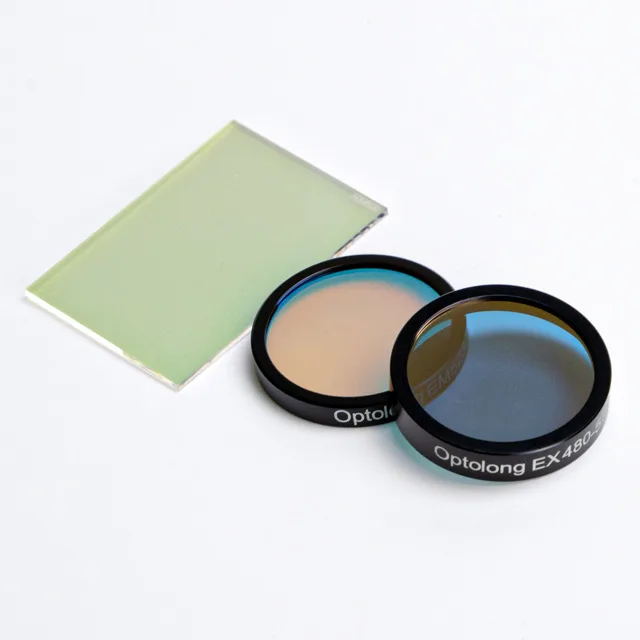Using these filters, you can achieve vibrant colors, reduce glare, and create stunning photo effects. Whether you’re an amateur photographer or a seasoned professional, emission filters are a must-have in your camera bag.
Designers create these filters to be user-friendly, enabling easy experimentation with different settings to achieve desired results. With a wide range of options available, you can find the perfect emission filter to suit your specific needs. Get ready to take your photography to the next level with emission filters!
What is an emission filter?
An emission filter is a device that reduces or eliminates specific wavelengths of light in various applications. It is commonly used in photography, microscopy, and spectroscopy. The purpose of an emission filter is to transmit or block specific colors or wavelengths of light selectively.
Photographers can attach an emission filter to a camera lens to control colors and create specific effects. In microscopy, emission filters improve image quality by blocking unwanted light and enhancing contrast.
Emission filters are vital to isolate specific light wavelengths from a sample in spectroscopy. They help scientists measure and analyze emission spectra accurately. These spectra provide valuable information about the sample’s composition and properties.
The use of an emission filter

An emission filter is a useful device for various purposes in different fields. Here are the key uses of an emission filter:
Photography
You can attach an emission filter to a camera lens to control colors and create specific effects in photographs. By selectively transmitting or blocking certain wavelengths of light, photographers can enhance or manipulate the colors in their images. For instance, a red emission filter can intensify warm tones and create a dramatic sunset effect.
Microscopy
Emission filters are essential in microscopy to improve image quality. They block unwanted light and enhance contrast, helping researchers see specific structures or molecules under a microscope. By filtering out unwanted wavelengths, the filters make imaging clearer and more detailed.
Spectroscopy
Emission filters are essential in spectroscopy. They isolate specific light wavelengths emitted by a sample. Scientists can analyze spectra by filtering out unwanted wavelengths. These spectra reveal valuable information about the sample’s properties.
Fluorescence Imaging
Emission filters are essential in fluorescence imaging in biology and biomedical research. They let the emitted fluorescent light pass through while blocking the excitation light.
What is emission in fluorescence?
Emission in fluorescence refers to light emission after it absorbs light. When exposed to an excitation light source, a fluorescent molecule or material absorbs photons, raising electrons’ energy levels. Energy in the form of light is released as the excited electrons return to their ground state.
The emitted light in fluorescence has a longer wavelength and lower energy than the excitation light. Stokes shift is the term used to describe Stokes shift. Each fluorescent substance has a characteristic emission spectrum representing the wavelength range.
The emission process is essential for fluorescence imaging. It works like this: researchers excite special molecules using light of a specific wavelength. Then, they detect and see the emitted light. This helps them study different biological and chemical processes.
Purpose of an Emission Filter in the Fluorescence Microscope
An emission filter in a microscope helps improve pictures by improving image quality. Here are some important reasons why fluorescence microscopy needs an emission filter:
- Making things clearer: The filter lets the emitted light pass through while blocking the bright excitation light. This makes the pictures clearer and helps us see the labeled samples better.
- Reducing background noise: Fluorescence microscopy often has weak signals against a noisy background. The filter blocks the unwanted background noise, making the pictures clearer and improving the signal-to-noise ratio.
- Separating different colors: Sometimes, we use different colors at the same time. The filter helps separate the light of each color, so we can capture what we want and block the other colors.
- Separating similar colors: When two colors look similar, the filter helps separate their signals. This allows us to see and analyze each color accurately.
- Getting accurate pictures: By using the right filter and placing it correctly, we can take accurate pictures that are true to our study. The filter ensures only the desired light reaches the detector, avoiding distortions.
Designers create emission filters to transmit specific light while blocking unwanted light. The filter’s choice depends on the fluorescent dye used, the microscope setup, and the specific needs of the research.
Final Message For You
An emission filter is essential in fluorescence microscopy. It enhances image quality and improves contrast. Its main purpose is to transmit fluorescence while minimizing photobleaching. By using an emission filter, researchers can obtain accurate fluorescence data. It plays a significant role in capturing precise images for analysis.
